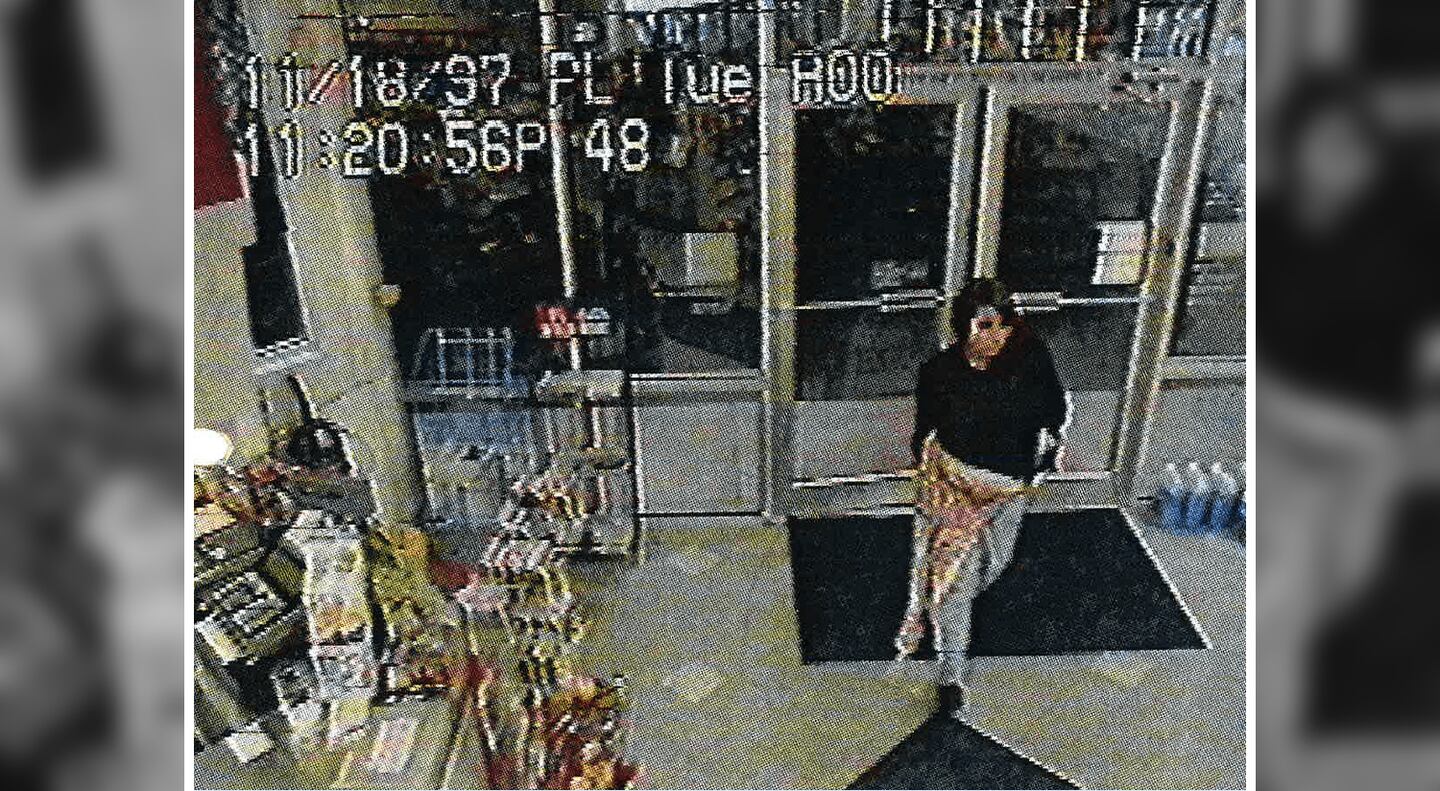SEATTLE — A probable cause affidavit details how a Seattle woman who hid her 1997 pregnancy went into a gas station bathroom the week before Thanksgiving and gave birth before leaving her newborn son to die in a trash can.
Christine Marie Warren, 50, is charged with second-degree murder in the Nov. 18, 1997, death of the newborn who became known as “Baby Boy Doe.” His body was found two days later by a store clerk.
Seattle police officials last week arrested Warren based on DNA testing that identified her as the mother of the baby. Her identity was traced with the help of genetic genealogy.
Warren is being held in the King County Jail in lieu of $10,000 bail. If convicted of the crime, she faces a standard range of between 10 and 18 years in prison.
The affidavit, written by Seattle police cold case Detective Rolf Norton, also details how investigators tricked Warren into giving a DNA sample last November through a fake mail survey regarding a fictional flavored water.
A bloody service station bathroom
Seattle police officers were called around 12:40 p.m. Nov. 20 to a Chevron station at 8721 Lake City Way NE after a clerk, Lakota Murray, discovered the baby’s body.
“Murray was taking out the bathroom trash and saw the infant at the bottom of (the) clear plastic trash liner,” Norton wrote. “The victim had been discarded into the garbage can with other bathroom trash items.”
The baby was newborn, with his umbilical cord and placenta still attached to his body, the affidavit states.
An autopsy performed by the King County Medical Examiner’s Office determined that the baby was born alive. His death was initially attributed to natural causes, according to Norton.
The following month, however, the medical examiner contacted the initial case detective and said the death should be reclassified as a homicide.
Employees at the gas station, which is now a Shell station, told detectives that the trash had last been taken out about a day and a half before the newborn was found.
“Store clerk Anthony Spencer told detectives that he found blood smeared in the bathroom, on the toilets, floor, trash can and the toilet paper dispenser in the early morning hours of Nov. 19,” the affidavit states. “He closed the bathroom for it to be cleaned.”
Another store clerk who cleaned the bathroom told police “he did not find this blood overly unusual for a public service station bathroom,” according to the court document. He cleaned and sanitized the restroom but did not take out the garbage.
In the aftermath of the Nov. 20 discovery of the infant, a woman who saw local media coverage called detectives and told them she remembered holding the Chevron door open for a woman just before midnight on Nov. 18.
“The female, who was wearing a blanket around her waist, headed straight to the restroom,” the affidavit states.
The witness, identified as J. Payton, assumed the woman was wearing a blanket around her waist due to a menstrual issue, Norton wrote. Like the clerks who’d seen the blood in the bathroom, Payton did not find the blanket particularly unusual until she learned of the dead infant.
Investigators obtained surveillance footage from the Chevron, which showed the witness holding the door open for a woman at 11:20 p.m. on Nov. 18.
“The footage showed Payton hold the door open for a woman holding a towel or blanket around her waist,” the affidavit states. “The footage showed the woman go immediately into the restroom.”
The woman came out of the restroom 14 minutes later, Norton observed.
Investigators released an image from the security footage to the public, along with a general description: a white woman in her early to mid-20s with short, dark hair. Though the photo produced numerous tips, none of them panned out.
Meanwhile, the medical examiner who conducted the baby’s autopsy preserved blood smears taken from a placental blood clot found with his body. In August 1998, authorities had a female DNA profile belonging to the mother.
The case went cold for the next two decades.
Genetic detectives
Norton and other detectives began re-investigating the case in January 2018. That August, the Washington State Police Crime Lab used the placental clot smear to establish a more complete DNA profile for the baby’s mother via 2018 techniques.
The profile was put through the FBI’s Combined DNA Index System, or CODIS, but no match was found, the detective wrote.
That’s where genetic genealogy entered the picture. The technique, in which forensic genealogists reverse engineer a family tree based on a suspect or victim’s DNA profile, gained prominence in the U.S. following the April 2018 arrest of Joseph James DeAngelo, who was identified as California’s notorious Golden State Killer.
Norton wrote that detectives submitted the mother’s DNA to a private lab, DNA Solutions in Oklahoma City, for DNA genotyping. The lab then entered the genotyping data into GEDmatch, a public genealogy website that people use to learn more about their ancestry.
Genealogist Barbara Rae-Venter, who helped identify DeAngelo, researched the ancestral lines of people who appeared to be related to Baby Boy Doe and compiled a list of possible suspects, according to the documents.
Detectives obtained DNA from one of the people on the list in March 2019, but she was excluded as the baby’s mother. Norton wrote that analysis of the woman’s DNA identified her as a relative of the mother, possibly a first cousin.
“Dr. Rae-Venter compiled a second list of five possible candidates for the mother of Baby Doe in May 2019,” the affidavit states. “Dr. Rae-Venter added a sixth possible name to this list in March 2020.”
It was Warren.
‘Sparkling Icy’
Warren was 27 years old in November 1997, when Baby Boy Doe was born. She lived in Seattle and detectives who researched her history found that she fit the physical description of the woman seen on the surveillance footage, right down to hairstyle.
“In November 2020, detectives sent a mailing to Warren which included a gift card and an invitation to participate in a flavored-water beverage survey for a fictional product, Sparkling Icy,” Norton wrote. “Warren responded to the survey and returned her response in a provided envelope which was sent to a P.O. Box rented by detectives.”
The envelope contained a signed survey, and the signature matched the one on Warren’s Washington driver’s license.
The envelope also contained a treasure trove of DNA, which Warren left behind as she licked the envelope and the stamp used to mail in the survey.
On New Year’s Eve, the state crime lab determined that the profile on the envelope matched that of Baby Boy Doe’s mother.
Read the probable cause affidavit below, courtesy of the Law & Crime Network.
Detectives brought Warren in March 1 for an interview, in which she allegedly admitted that she was the baby’s mother. She identified herself as the person shown in the surveillance image.
“Warren said her pregnancy was unplanned and that the father of her child reacted negatively when she told him she was pregnant,” Norton wrote in the affidavit. “Warren said that she could not handle the idea of having the child and blocked the pregnancy out of her mind.”
Warren told police she ignored the pregnancy and did not receive any medical attention over the nine months she was carrying her son. She told no one about her condition.
“Warren stated that on the night of Baby Doe’s birth, she was riding in a friend’s car and started experiencing cramps,” the affidavit states. “She asked her friend to stop at the gas station. Warren said that she went inside and delivered the child in the restroom.”
Warren told detectives that the baby “dropped into the toilet,” where she left him for several minutes. She was unsure if he was alive when she “panicked” and stuffed him into the trash can, covering his body with trash.
>> Read more true crime stories
Earlier this week, Norton commended the diligence of detectives who have worked on the case from the beginning.
“This case was investigated by several generations of detectives covering multiple decades,” Norton told KIRO in Seattle. “The original case detectives, the scene detectives in this investigation, did a tremendous job. And they created a foundation of evidence that we were able to parlay into a conclusion with science that we have 20 years later that didn’t exist then.”
While authorities are glad to have solved the case, Norton said he could “certainly say there’s no celebration going on.”
“This was an incredibly sad case in 1997, and it’s an incredibly sad case in 2021,” he said.
Cox Media Group











